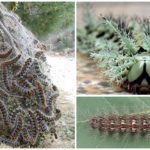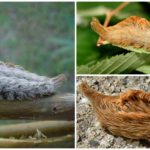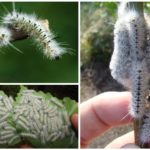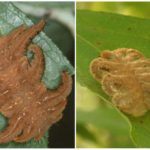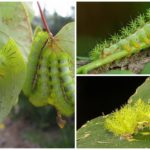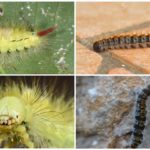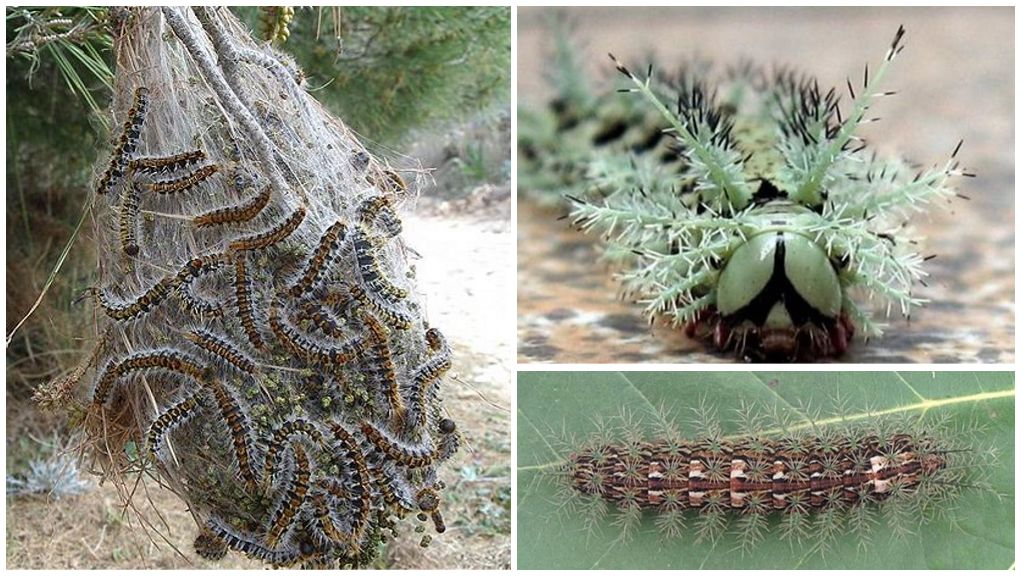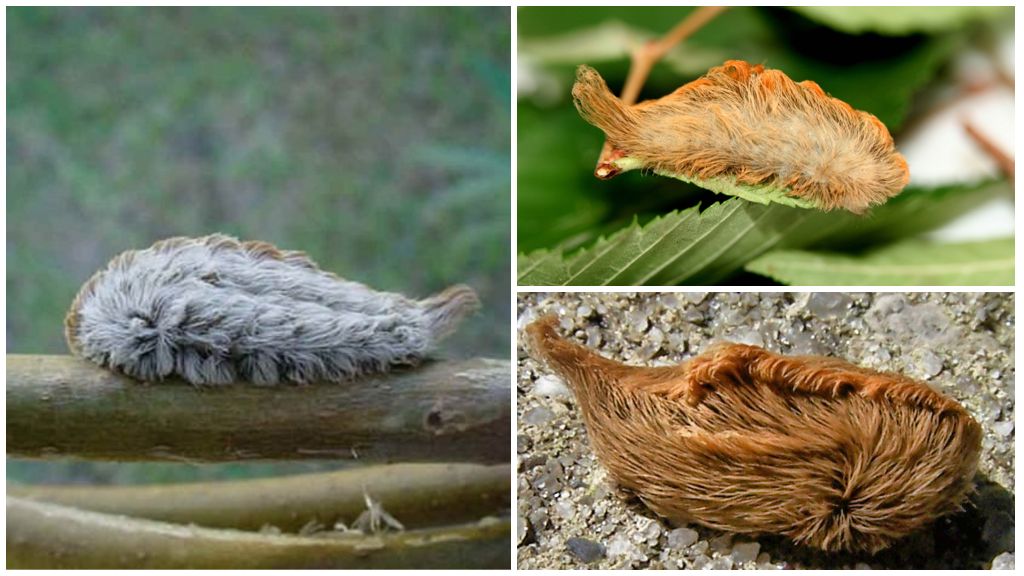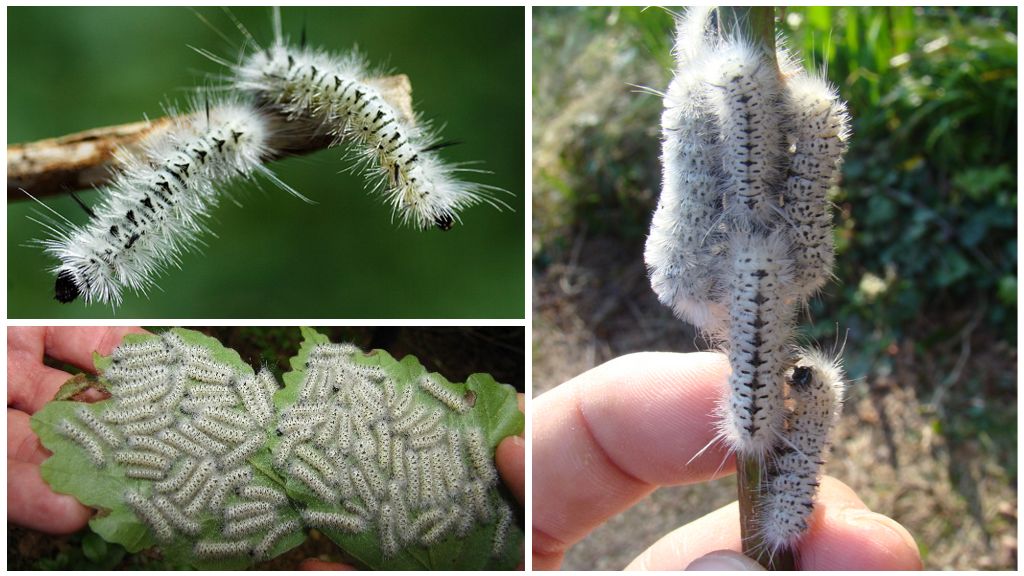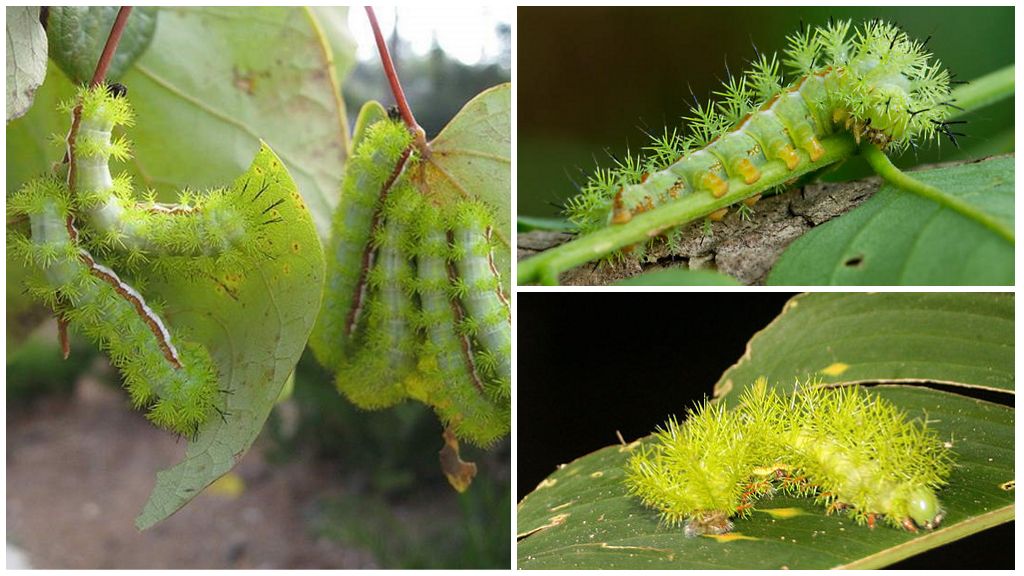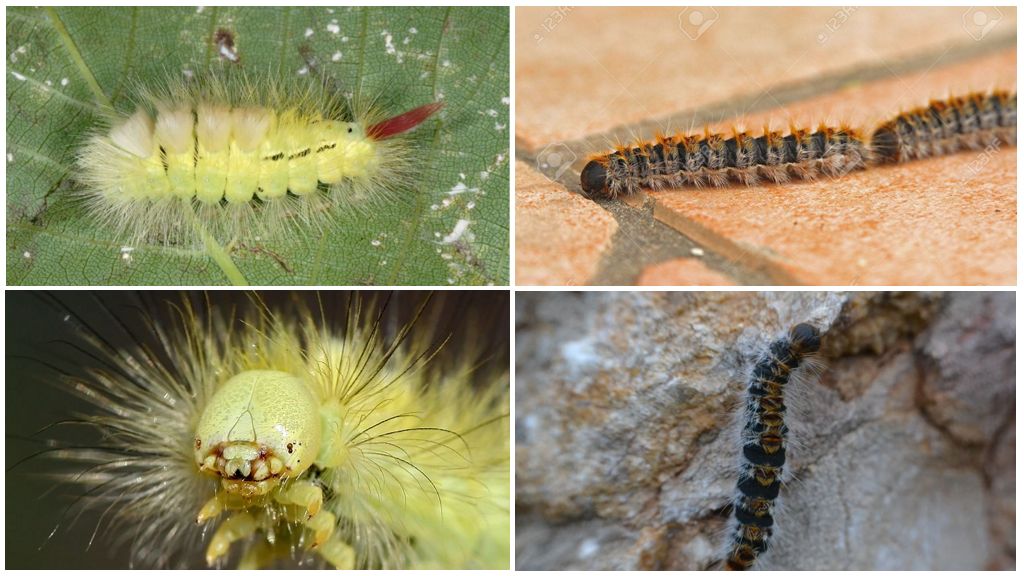Description and photos of dangerous poisonous caterpillars
Content
- Lonomy
- Megalopyge opercularis
- Hickory bear
- Monkey caterpillar
- Saturnia io
- Russian species of poisonous caterpillars
Unlike other insects, most butterflies are beautiful even in the larval stage. Caterpillars often have a more beautiful appearance than a butterfly. Most future butterflies are completely harmless to humans, but there are dangerous ones among them. By a strange coincidence, the truly poisonous caterpillars did not appear on the territory of Eurasia, inhabiting Australia and both American continents.But Eurasia is not deprived of unpleasant caterpillars for humans.
Types of poisonous caterpillars
Not all of these species are dangerous to humans, since some of them accumulate in the body the poison of those plants that they feed on. Formally, they are poisonous. The real danger of such species are only for those who decide to eat them. The main mass of dangerous caterpillars is found in tropical and subtropical zones of the planet.
Lonomy (Lonomia obliqua)
Many species of lonomy have very colorful larvae. The bright appearance of the "calf" arose for a reason. They are poisonous.
On a note!
But in the case of a leonomy, the caterpillar looks more like a wand, on which a rare moss has grown. With such a nondescript appearance, it is the most poisonous caterpillar on the planet. Her poison can kill a person.
Several people a year perish from the poison of the appearance of lonomy in the countries of South America. But not so bad. In fact, the poison of lonomy enters the human body in small doses. A one-time touch on the hollow spines of the limonomy will not do much harm. For death it is necessary to touch the caterpillar from 20 to 100 times depending on the resistance of the organism. Getting such a dose of poison is really easy.It is enough to accidentally touch a cluster of caterpillars on a tree trunk. Due to their protective coloration, these larvae are hardly visible.
The poisonous substance has an anticoagulant effect and can accumulate in the body. When a critical dose of poison is reached in a person, internal bleeding begins, which can lead to death. Intracranial hemorrhage is especially dangerous.
Megalopyge opercularis
The insect lives on the American continents and has no Russian name. The larva of this butterfly is sometimes called Coquette. She looks like a ball of hard fur with a tail. To protect against enemies, this caterpillar has thorns with poison hidden in stiff bristles.
When touched, the spikes pierce the skin and break, freeing the poison. In the damaged area, there is a strong "jerking" pain, spreading throughout the limb. Red spots appear at the site of poison penetration into the tissue. In case of severe poisoning or individual intolerance can occur:
- vomiting;
- nausea;
- headache;
- lymph nodes;
- discomfort in the stomach.
Sometimes anaphylactic shock or difficulty breathing is possible.In normal cases, signs of defeat by the poison of Megalopid disappear after a few days. The pain passes in an hour. But when you receive a large dose of poison, the pain can last up to 5 days.
On a note!
It is one of the most poisonous caterpillars of North America.
Hickory Bear (Lophocampa caryae)
The white fluffy caterpillar does not seem dangerous. She has no poison. But easily separated setae are covered with microscopic notches. With rough skin on the hands, this caterpillar can do no harm, but in some its bristles cause itching and rash. Particularly affected by bristles are people suffering from allergies.
Important!
It is impossible to rub the eyes after touching this caterpillar. This is the main danger from Dipper hickory. The jagged bristles bite into the mucous membrane of the eyes and it can only be removed surgically from there.
Monkey caterpillar
Larva moth witches. In both cases, an unattractive insect. It lives in the south of the USA. Belongs to the family of mucous membranes, having instead of the paws of the sucker. When moving resembles slugs. On the back it has 6 pairs of outgrowths covered with bristles.
On a note!
Previously considered poisonous, but experiments conducted showed that these caterpillars do not have poison. In allergy prone people, the bristles stuck into the skin cause itching and burning.
Saturnia Io (Automeris io)
One type Peacock eye. The caterpillars in the first stage are reddish in color. Later, they change color to green, becoming like the "earrings" of some trees. On the top photo of Saturnia io at an older age, on the bottom larvae in the first stage of development.
Caterpillars are protected by thorns with a strong poison, which is thrown into the enemy at the slightest danger. Contact with this poison leads to erucism: toxic dermatitis. The erucism is characterized by the following features:
- blisters;
- itching;
- strong pain;
- lymphangitis;
- edema;
- skin necrosis.
Sometimes with erucism, tissue death occurs.
But all these dangers live in quite exotic countries and not every Russian tourist will face them. But there are three types of butterflies, the posterity of which can be stumbled upon after leaving home in the homeland. Poisonous caterpillars of Russia do not carry mortal danger, but they are capable of delivering a lot of unpleasant impressions.
Russian species
These butterflies are distributed not only in Russia, but throughout the Eurasian continent. A characteristic sign has only the larva of the Red-tails. The posterity of marching silkworms is characterized by a nondescript coloration. Their only distinguishing feature is long stubble. Therefore, photos of poisonous caterpillars of Russia, along with their descriptions below.
Redtail (Calliteara pudibunda)
So called nocturnal butterfly - a pest of fruit crops, in which the similarity of red is present only on the whiskers. But this name was obtained by this insect because of the larvae. Caterpillars Red-haired / Barned-haired Copperheads may have a different color:
- Gray;
- pink;
- dark brown;
- lemon yellow.
But the obligatory sign of the caterpillar of this species is a bunch of long crimson or crimson-red hairs protruding upward on the posterior end of the larva. Insect is not able to seriously harm. Contact with the hairs on the body of the caterpillar causes an allergic reaction in the form of a rash in humans. Habitat - Eurasia, except for the Far North. Prefers beech and oak forests.
Silkworm (Thaumetopoeidae)
There are several species of this family.There are no silkworms only in the Americas and Australia. Two species live in Russia:
- marinating pine silkworm (Thaumetopoea pinivora) feeding on pine needles;
- marinating oak moth (T. processionea) feeds on oak foliage.
These butterflies received the prefix “marching” for the fact that their caterpillars move strictly one after another, being guided by the silk thread of the individual walking in front of them.
Trekking silkworms are malicious pests that can destroy entire hectares of forests. They received the name "silkworm" for interweaving the "unlucky" trees with silk thread. For sericulture, for which the use of the silkworm is used, the traveling relationship does not have.
Interesting!
Caterpillars Silkworm do not have bristles on the body at all.
Larvae of marching are covered with thick long bristles. The bristles have microscopic notches to help them penetrate the body of the "offender."
Therefore, the silkworm caterpillar poison is questionable. The bristles stuck into the skin can move only inside the body. They are very brittle and impossible to pull them out. Moving inward, parts of the bristles cause itching, scratching and blistering. This is a common reaction of the skin to stimuli.Those who “caught” the smallest protective needles of the Opuntia cactus into the skin received a similar reaction on the skin.
In Russian dangerous caterpillars, the bristles are usually not toxic, but easily breaking off and rewarding their offender with a mass of small splinters. It is not recommended to touch any shaggy caterpillars. And to see how easily these larvae lose their stubble when touched, you can touch them with a stick.
General principle of safety in relation to caterpillars of any kind of butterflies: never touch those protected by bristles.

